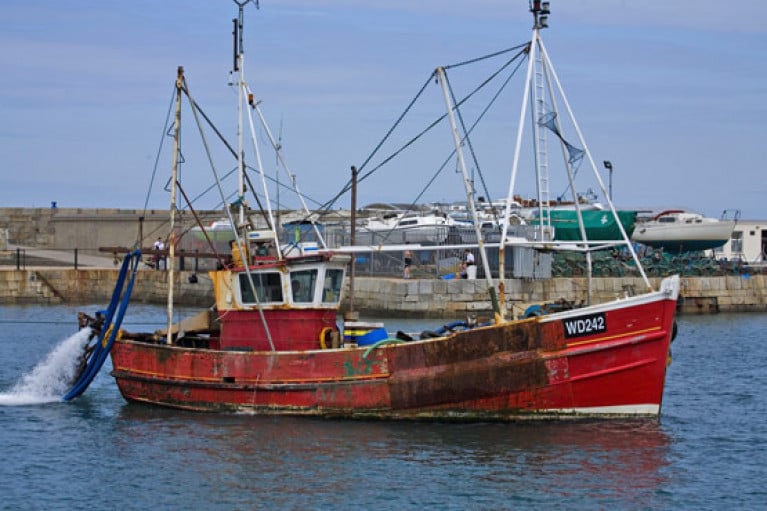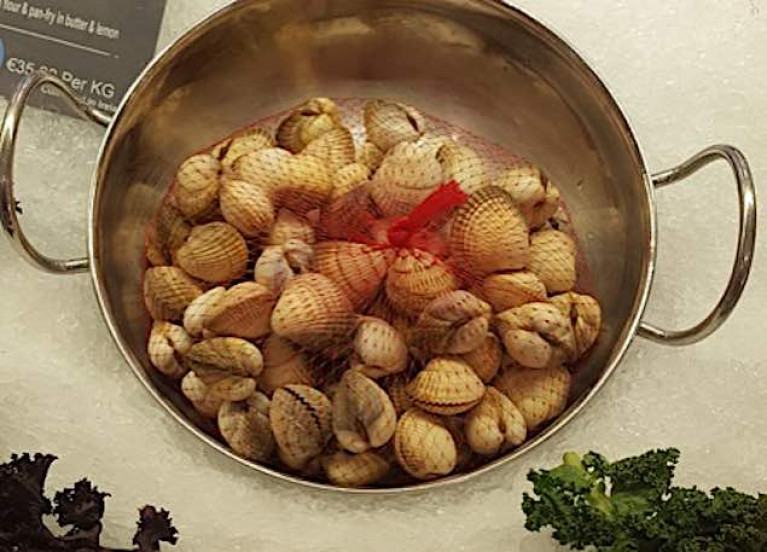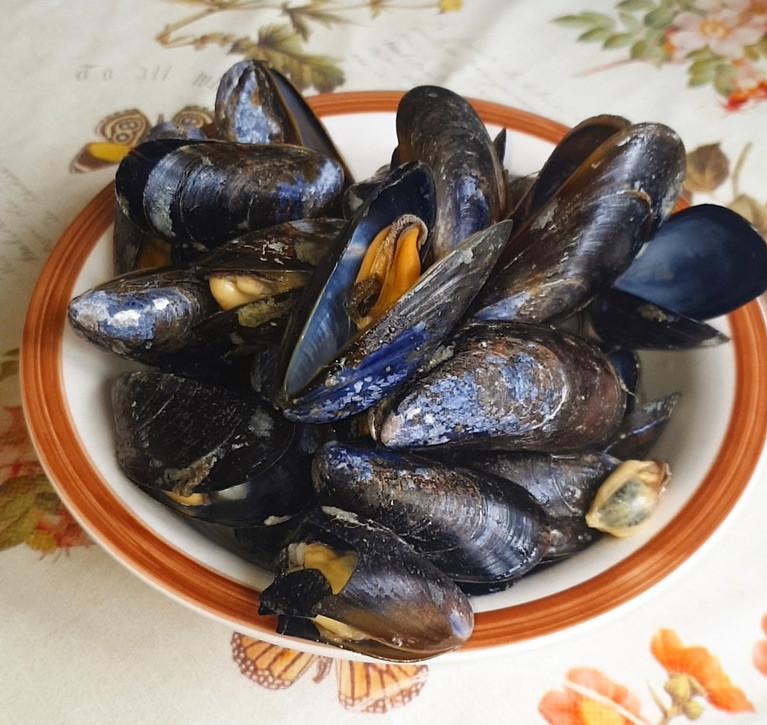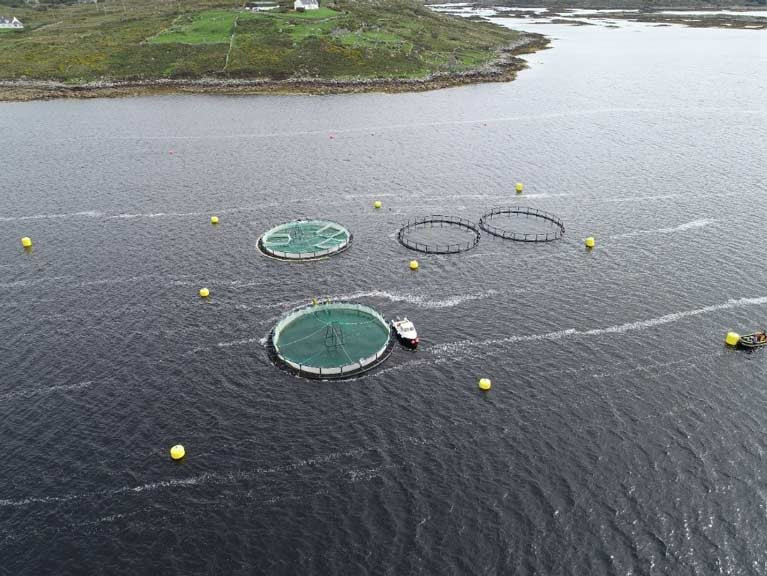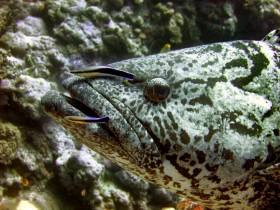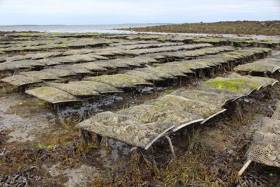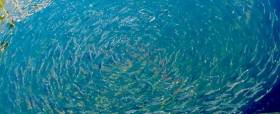Displaying items by tag: aquaculture
Review Shows Irish Fishing Industry Buoyed By Exports But Brexit & COVID-19 Cast A Shadow
The Department of Agriculture, Food and the Marine’s latest Annual Review and Outlook for the fisheries sector is a generally positive one — though tempered by the challenges of Brexit and the coronavirus.
Published today, Thursday 8 October, the review cites CSO figures for 2019 which put the value of Irish seafood exports at €577 million with increases in the value of both salmon and mackerel, Ireland’s most valuable export catches.
Mackerel’s 7% value increase was particularly remarkable as it came despite an 8% drop in volume, following a reduction of the quota by one fifth — thanks in part to a bullish market in Asia.
Shellfish exports had a challenging year in 2019, however, with volumes and values down significantly in the oyster sector.
The coronavirus pandemic has seen similar challenges experienced across the fisheries and aquaculture sectors over the course of 2020 thus far.
“Nonetheless, in spite of the difficulties, the fishing industry has continued to keep food in our shops and on our tables during this extraordinary time,” the report says.
“This has highlighted the vital role that the fishing industry plays in the food chain. This, in turn, underscores the importance of ensuring the sustainability of our fish stocks.
“Due to the closure of the food service sector around the world during the pandemic and transportation issues, exports of fish from Ireland were down around 20% in value during the first four months of 2020.”
Meanwhile, Brexit remains a serious concern, with fears that more than 70% of the Irish fishing fleet could lose access to their regular grounds in UK waters in the absence of a deal on fisheries.
The report outlines: “The UK demand is that quota shares are established on the basis of ‘zonal attachment’ and each year access to the UK fishing grounds are ‘purchased’ using the transfer of EU quota to the UK as recompense for this access.
“If the UK zonal attachment demand was applied, it would have huge negative consequences on Irish fisheries because the UK could claim a much higher proportion of the available fishing quotas for each stock each year.”
It continues: “The UK ‘zonal attachment’ claim is based on the level of catches taken from UK waters. If this criterion was used, it would result in Irish fish quotas being cut by 35% in value.
“The displacement of the EU fleet from the Irish exclusive economic zone (EEZ) and/or the reduction in EU quota shares, if remedial measures are not taken, is likely to lead to serious over-exploitation of stocks in our own EEZ; deliver substantial cuts to many of our quotas; [and] cause a substantial control challenge for the Irish navy, and potentially conflict at sea.”
The report also comes on the same day that the High Court struck down the ban on larger vessels fishing within Ireland's six-mile nautical limit, as reported earlier on Afloat.ie, which could have significant conseqences for Ireland's inshore fishing fleet.
The department’s 2020 review and outlook for fisheries and aquaculture can be found attached below, and the full review is available from the DAFM website HERE.
Cockles & Mussels Alive-oh But Perhaps Not with Molly Malone
The Dubliners' ode to Irish shellfish in their song Molly Malone may have been relying on inaccurate information.
New research by University College, Cork (UCC) scientists reports there is “inconsistent” data on the location of Irish cockles in previous studies.
Cockles are a well-known shellfish across Europe, valued for their “meat, cultural symbolism and ecological value”.
The UCC scientists involved in a Europe-wide “Cockles” project state that records can be found throughout history, from a wide range of sources including museums, scientific works and fisheries records.
 A buried cockle
A buried cockle
However, they have described as “worrisome” the lack of “focus” in previous work.
“An understanding of cockles’ past survival is essential in order to predict how species will fare in a future of climate change,” they say.
The data included locations of where they were found, and how many were there, according to Kate Mahony, of UCC’s School of BEES, AFDC, MaREI and Environmental Research Institute.
“Growing up in Ireland, cockles were part of my childhood. One of the first songs you learn here is about Molly Malone, selling “cockles and mussels” on the streets of Dublin,” she said.
“Because of the importance of the species, here and across Europe, I wasn’t surprised that we were able to gather large amounts of data,” she said.
However, this data was gathered and reported in an inconsistent manner, highlighting the lack of focus on studying the historic and geographic trends of this species, she said.
The scientists compared cockle density (the number of cockles in an area) with changing climate in the Atlantic.
They said it was “evident that cockles were influenced by a wide range of parasites, temperature fluctuations, and varying methods of fishing and legislation”.
The team also examined the sources of their information. Despite the large volume of data, large differences existed in data quality and methodology.
“What really stood out to us was the lack of communication between stakeholders such as scientists and fishery managers,” co-author Dr Sharon Lynch said.
“ We examined the sources of the data and found a large knowledge gap between researchers and those that require this information practically”.
The researchers recommend ensuring improved, knowledge-based fisheries by “standardising monitoring and creating an online portal to increase the knowledge transfer both locally and internationally”.
“These steps will be vital in order to protect this emblematic species into the future,” they state.
Their study is published in the online journal Plos.Org here
A Polish man says he has quite literally turned oyster farming on its head - by inventing a revolutionary device that allows for three times more oysters within the same area of seabed.
Grzegorz Skawiński developed the product over two years which uniquely has a rotating cage system.
Oyster sacks are placed one above the other, rather than traditional farming of side by side on trestles, saving space on the seabed and increasing production.
And when the device rotates, it allows the oysters to move freely, aiding growth.
Normally each oyster bag is turned by hand – five in a row on a trestle. Grzegorz’s system allows 16 to be turned in one rotation.
The project currently in prototype stage has other benefits.
Along with a high-quality oyster in terms of shape and meat, the device can farm in deeper waters, previously inaccessible.
And because of the rotating system, back pain is relieved, common in the industry.
Sea pollution is also eliminated as rubber bands that hold bags in place on a trestle, are not required on the device.
He developed the product having worked in oyster farming in Co. Waterford for eight years.
He saw the potential of a new product to help with ease of farming and plastic pollution, but vitally production levels and increased profits.
Grzegorz said: “When you work with oysters, you understand intimately how farming methods work, and importantly for me, how they can be improved.
"The idea of rotation was born while working on the project. The main goal of the project was to place as many oysters as possible on the seabed surface."
Grzegorz first started on the project in 2017 and created the device for testing and research purposes.
It’s currently patented in Ireland, along with patents expected in the UK and France.
Grzegorz is now keen to move on with the next phase of the business – either to sell the licensed patent or work with a manufacturer to market the product globally.
€3.4m Investment in 15 Aquaculture Enterprises
The Minister for Agriculture, Food and the Marine, Barry Cowen T.D. today announced €3.4 million in new investment by 15 aquaculture enterprises, with his Department’s European Maritime and Fisheries Fund Programme providing grants of €1,282,277.
Minister Cowen said, “I am delighted to announce the approval of a €3.4 million investment by 15 aquaculture enterprises with €1.3 million support from my Department’s EMFF Programme. The latest investments are aimed at boosting production at oyster, mussel and salmon sites around our coast. It is heartening to see this continuing confidence in the future by these ambitious aquaculture enterprises. While recent months were challenging for many aquaculture businesses, the overall trend has been one of growing world demand for our seafood products.”
As SMEs, most of the aquaculture businesses received grants of 40% towards the cost of their investments, with one non-SME receiving 30%, a new entrant to the sector receiving 50% and one investment in organic certification also receiving 50%. The grants are co-funded by the Government of Ireland and the European Union and are subject to terms and conditions.
Grant approvals - Sustainable Aquaculture Scheme
|
Beneficiary |
Location |
Project |
Total Investment |
EMFF Grant |
Rate |
|
Derrylea Holdings |
Galway |
Organic Certification of Farmed Atlantic Salmon |
€7,500 |
€3,750 |
50% |
|
Sliogéisc Inisheane Teoranta |
Donegal |
Capacity increase in oyster seed production |
€28,723 |
€11,489 |
40% |
|
Feirm Farriage Oileán Chliara Teoranta |
Donegal |
Phase 3: Installation of grid frames and construction of Aquaculture Workboat |
€761,595 |
€228,478 |
30% |
|
Glenn Hunter |
Sligo |
Construction of an oyster handling facility |
€68,747 |
€34,373 |
50% |
|
Ocean Farm Ltd |
Donegal |
Phase 3: Upgrade of salmon farm technology |
€1,261,663 |
€504,665 |
40% |
|
Skipper Shellfish Ltd |
Kerry |
Phase 2: Increase capacity of oyster farm |
€25,876 |
€10,350 |
40% |
|
Northern Bay Oyster Ltd |
Donegal |
Increase capacity of oyster farm |
€29,670 |
€11,868 |
40% |
|
Mulroy Bay Mussels Ltd |
Donegal |
Investment in new handling equipment |
€75,900 |
€ 30,360 |
40% |
|
Killary Fjord Shellfish Ltd |
Galway |
Upgrade of rope mussel farm to continuous longline system |
€17,120 |
€6,848 |
40% |
|
Woodstown Bay Shellfish Ltd |
Waterford |
Phase 2: Increase capacity of oyster farm |
€606,815 |
€242,726 |
40% |
|
Oceanic Organic Oysters Ltd |
Donegal |
Phase 2: Increase capacity on oyster farm |
€183,145 |
€73,258 |
40% |
|
Rosmoney Shellfish Ltd |
Mayo |
Increase capacity of oyster farm |
€124,980 |
€49,992 |
40% |
|
Seastream Ltd |
Mayo |
Purchase of smolt feeding system |
€60,000 |
€24,000 |
40% |
|
Rodeen Fish Farms Ltd |
Cork |
Phase 3: Introduction of continuous rope mussel system |
€83,197 |
€33,278 |
40% |
|
Seal Harbour Enterprises Ltd |
Cork |
Phase 3: Upgrade of rope mussel equipment |
€ 42,100 |
€16,840 |
40% |
|
Total: |
|
|
€3,377,031 |
€1,282,277 |
|
The Future of Irish Aquaculture from Mono to Multi
Seafood is a popular and healthy food product in Ireland with the average Irish person consuming about 22kg of fish per year.
People recognise the health benefits with fish being low-fat and a good source of omega-3 fats, which are vital for brain function, heart and many other benefits. Salmon is the most popular fish bought by Irish families. In Ireland most of our salmon are farmed, and along with mussels and oysters, are the main farmed species in the country. Aquaculture is the farming of animals in the water and has been practised for centuries, with the monks farming fish in the middle ages. More recently the technology has progressed and the aquaculture sector is now producing in the region of 50 thousand tonne annually and provides a valuable food product as well as much needed employment in many rural areas of Ireland.
A typical fish farm involves keeping fish in pens in the water column, caring for them and supplying them with food so they grow to market size. Or for shellfish, containing them in a specialised unit and allowing them to feed from natural plants and materials in the water column until they reach harvestable size. While farming fish has a lower carbon and water footprint to those of land animals, and a very efficient food fed to weight gain ratio compared to beef, pork or chicken, farming does require protein food sources and produces organic waste which is released into the surrounding waters. Finding sustainable food sources, and reducing the environmental impacts are key challenges facing the sector as it continues to grow.
One innovative solution being investigated to deal with these issues is called integrated multi-trophic aquaculture, or IMTA.
 Growing of scallops at Lehanagh Pool
Growing of scallops at Lehanagh Pool
IMTA is a different way of thinking about aquatic food production and is based on the concept of the ´food chain’. It involves farming multiple, complementary species from different levels of the food chain together for their mutual benefit, where the waste by-products from the fish providing food for another species. Shellfish filter out microscopic plants and organic content from the water column to grow, and seaweeds and plants absorb the minerals from the water for them to grow. Growing shellfish and seaweed species in close proximity to fed fish mimics these natural cycles in the seas and creates a local ecosystem where the wastage and impacts are reduced, and the productivity and diversity of products from the site is increased.
The Marine Institutes’ aquaculture research site in Lehanagh Pool in Connemara is an example of IMTA, where salmon are reared on site, with scallops and seaweeds growing alongside helping to remove the organic inputs. IMTA is seen as a promising solution for sustainable aquaculture development.
The Institute is coordinating the innovative Horizon2020 IMPAQT project which is working to promote aquaculture production based on IMTA, by addressing the lack of data and tools to assess the factors that affect IMTA, and to enable a real-time response to production challenges, environmental impacts and seafood quality.
 Growing of seaweed on a line
Growing of seaweed on a line
The project is developing a computerised, artificially intelligent, management platform which analyses the environment, the fish behaviour, and data from other sources such as satellite data, image analysis, and inputs from the farmer on site. This is used to inform fish welfare and water quality and to provide real-time operational feedback and advice to the farmer on the management of their site. The technologies include new sensors, wireless communication systems, and state of the art software utilising the internet of things. This system is being designed and tested at the Institute’s research site in Lehanagh Pool, at Keywater Fisheries IMTA site in Sligo, in collaboration with our international partners at other sites across Europe, and in Turkey and China.
Concerns Over Mass Use Of ‘Cleaner Fish’ In Irish Salmon Farms
Campaigners against salmon farms have raised concerns over the state of Irish wrasse stocks after it was confirmed the fish have been taken en masse to help clean lice from farmed salmon.
As Donegal News reports, a number of salmon farms in Donegal, Galway and other areas owned by Mowi — the former Marine Harvest — have between them moved in tonnes of wild wrasse, a known ‘cleaner fish’ that feeds on sea lice, over the past four years.
Responding to a Dáil debate question from Catherine Connolly TD this past summer, Marine Minister Michael Creed confirmed that “several special of cleaner fish are used in Ireland as a method of controlling sea lice”.
But there are fears that the mass withdrawal of wrasse and other such species from the wild could tip the balance of Ireland’s delicate marine ecosystem.
“The absence of wild wrasse in bays may result in stress and disease in other large species of fish which rely on wrasse to keep them clean of parasites,” said Billy Smyth, chair of Galway Bay Against Salmon Cages.
Donegal News has much more on the story HERE.
Galway Bay FM reports that An Bord Pleanála has refused planning permission for a development at a Connemara site overseen by Udarás na Gaeltachta.
Plans for the Páirc na Mara facility were previously approved by Galway County Council, but continued to face opposition from local groups concerned that the initial proposals would develop into a full-scale salmon farming facility.
That decision has now been overturned by the national planning authority, according to Galway Bay FM.
Four months ago the Páirc na Mara marine project had welcomed the announcement of €2 million in funding from the Business, Enterprise and Innovation to develop a market-focused marine innovation and development centre at the Cill Chiaráin site.
Oyster Farming Industry & Researchers Meet To Discuss Latest Knowledge On Oyster Health
The latest research and knowledge on oyster diseases was presented at a meeting on Pacific oyster health held recently by the Marine Institute’s Fish Health Unit.
The event attracted more than 80 participants from Ireland’s oyster farming industry, as well as representatives from Ireland’s seafood development agency Bord Iascaigh Mhara.
Presentations focused on mortality, disease management and current national and international research in oyster health.
Oyster mortalities in recent years in Ireland have been mainly associated with either Ostreid herpes virus-1 μVar (OsHV-1 μVar) infection or the bacterium Vibrio aestuarianus. Both diseases cause significant oyster mortality events and an economic loss to oyster farmers and producers.
Researchers from the Marine Institute and University College Cork presented the major findings from the REPOSUS project, funded by the Department of Agriculture, Food and the Marine’s FIRM programme.
The three-year REPOSUS project focused on reducing the impact of pathogens associated with mortalities in Pacific oysters. This included results from sentinel trials in disease impacted bays, molecular and pathogenicity characterisation studies on isolates of OsHV-1 and rache and studies on environmental parameters which influence mortality.
French institute IFREMER also presented the latest results from the VIVALDI project (Preventing and Migrating Farmed Bivalve Diseases) funded by the EU’s Horizon 2020 research and innovation programme.
VIVALDI combines European research resources to better understand shellfish diseases and improve the sustainability and competitiveness of the European shellfish industry. The Marine Institute is one of 21 partners involved in this research project.
Industry representatives from Ireland also shared their experience of managing losses in shellfish production due to oyster disease and mortality on their sites.
This feedback, along with research presented, will be used to update the current best practice guide for disease control and management in Ireland's oyster industry.
Kinsale Yacht Club Objects To Mussel Farming Licence
Kinsale Yacht Club is encouraging its members to make submissions on the recent licence application for a mussel farm off Castlepark Beach in the West Cork harbour.
Following its previous trial in the area, Woodstown Bay Shellfish — based in Dunmore East, Co Waterford — made its application late last year for an Aquaculture Licence to dredge for mussels at a site of around 25 hectares beyond James Fort.
The application also states that the site is located in or adjacent to a sensitive area, the closest to the site being the Sovereign Islands Special Protection Area.
A public notice was published in the Southern Star last Thursday 7 February, and submissions must be made prior to Wednesday 6 March quoting the reference T05/472A to:
Department of Agriculture Food and the Marine
Aquaculture and Foreshore Management Division
National Seafood Centre
Clonakilty, Co Cork
All submissions must be signed and no fee is required.
Kinsale Yacht Club Commodore David O’Sullivan confirmed that the club has already made its own submission on behalf of KYC members, which is available on the club’s website.
The letter cites the strong tidal current in the proposed location of the mussel bed as a concern – and suggests a recent "notable increase" in mussel growth in the marina, allegedly resulting from mussels from the trial being washed towards the town after stormy conditions.
“We must do all we can to preserve our beautiful harbour and every little helps,” Cdre O’Sullivan said.
#Seafood - Marine Minister Michael Creed has called for European Maritime & Fisheries Funding (EMFF) for small to medium enterprises in aquaculture and seafood processing to be continued post-2020.
Addressing the Council of Agriculture and Fisheries Ministers meeting in Luxembourg yesterday (Monday 18 June), the minister said: “Ireland expects to fully spend its 2014-2020 allocation and we foresee increasing investment opportunities and demands for the 2021-2027 period.
“I would like to highlight one particular area of initial concern that we have identified, namely the apparent proposal to restrict EMFF aid for capital investment in aquaculture and seafood processing to financial instruments only. Currently such a restriction applies to large scale operators only.
“The majority of our operators are small or medium enterprises. Depriving them of grant aid would have a very negative impact on our policy objectives to grow scale and add value in our processing and aquaculture sectors.
Minister Creed added: “While we are in favour of continued and increased use of financial instruments, we must continue to have recourse to grant aid where these are most appropriate.”


























